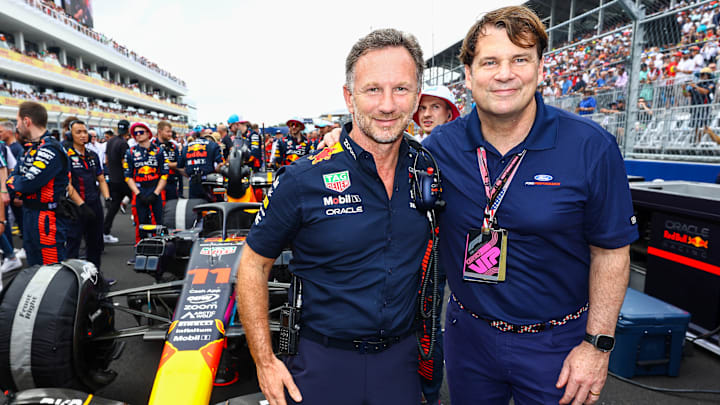Having the best driver means a lot, but in Formula 1, without the strongest engine and car, it can mean very little. In 2025, there are ten teams in F1, but there are far fewer engine suppliers.
There are just four engines on the grid at this point, supplying the 20 drivers, but there are plenty of changes expected come 2026. F1 cars in 2025 run hybrid V6 engines, and in 2026 the V6s are due to remain, but with big changes.
According to F1, the 2026 engines will feature "a far more powerful battery component that will allow it to generate three times the electrical power." F1 says the engine itself will drop in power, but that will be made up by the additional hybrid power.
So who is supplying who in 2025? And where are things set to change to in 2026? Here's what to know.
2025 F1 engine providers
Renault: Supplies Alpine
If you watched F1 a few years back, you'll know Renault as the former name of the Alpine F1 team.
The change was a simple rebrand to promote Renault's sports car brand.
Renault only supplies engines for its own team, and are by far the least successful engine provider on the grid.
That's likely why Renault is set to end its engine program after 2025.
Ferrari: Supplies Ferrari, Haas and Sauber
The legendary prancing horse is the power behind three teams on the grid in 2025.
Haas and the Sauber teams have had close partnerships with Ferrari over the last decade, with Charles Leclerc spending his time with Sauber (known as Alfa Romeo then) before being "promoted" to Ferrari. And Ollie Bearman got the call up to fill Carlos Sainz's spot despite being the Haas reserve in 2024.
Mercedes: Supplies Mercedes, McLaren, Aston Martin and Williams
Mercedes engines supply for the most teams in 2025.
Mercedes engines roped in over 110 wins from 2014-2021, and are starting to be a common victor again over the past two seasons -- but this time thanks to customer team McLaren.
Honda: Red Bull, Racing Bulls
Once a maligned F1 engine due to reliability issues, Honda rised to prominence along with Max Verstappen's dominance.
Honda actually formally exited F1 after 2021, but their power has remained with both of the Red Bull F1 teams. But that won't stay for much longer.
Who will run which engine in 2026?
With new regulations also comes a bunch of changes in power suppliers thanks to some new/old faces.
F1 Team (changes in bold) | Engine Supplier (changes in bold) |
|---|---|
McLaren | Mercedes |
Red Bull | Red Bull Ford |
Mercedes | Mercedes |
Ferrari | Ferrari |
Racing Bulls | Red Bull Ford |
Aston Martin | Honda |
Williams | Mercedes |
Haas | Ferrari |
Audi (formerly Sauber) | Audi |
Alpine | Mercedes |
Cadillac (new team) | Ferrari |
The changes for 2026 are going to be wholesale for all but five teams.
Ford returns
Ford is set to partner with Red Bull to supply powertrains for both of Red Bulls teams. The car maker was last in F1 in 2004.
Audi debuts
At long last, Sauber will become Audi in 2026, and Audi will supply their own powertrains. This comes after a few awkward transition years for Sauber since Alfa Romeo exited. The German company will certainly hope the energize the backmarker team.
Alpine transitions to Mercedes power
With Renault's powertrain work done after 2025, Alpine will see if it can take steps forward as the fourth Mercedes-powered team.
Honda returns with Aston Martin
Although Honda only formally left the sport, they never really were gone. But in 2026, Honda will make a full return with Aston Martin. Honda says the decision to come running back came from the focus on "sustainable fuels and the greater focus on electrical power" in 2026.
Cadillac debuts with Ferrari
The long process of bringing the American team to the grid becomes a reality next season. But they will debut with Ferrari power, but are eyeing their own power unit for 2029.
